Art & Tech
A New Space Telescope Is Poised to Take Unprecedented Images of the Origins of the Universe, and Scientists Are Freaking Out
The telescope will also observe exoplanets, looking for Earth-like atmospheres and oceans.
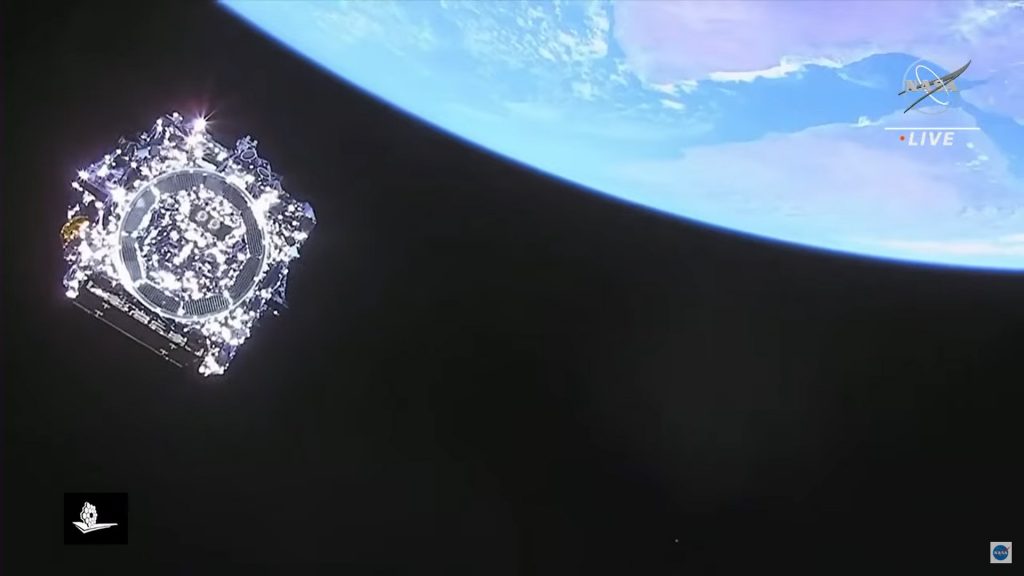
The telescope will also observe exoplanets, looking for Earth-like atmospheres and oceans.

NASA is one step closer in its plan to take unprecedented images of the universe, and possibly discover new planets.
This week, NASA successfully completed deployment of its five-layer sunshield, which is about the size of a tennis court, on the newly launched James Webb Space Telescope. It stands to offer myriad new opportunities for astronomers—and take unprecedented images of our universe.
Named for NASA’s administrator during the Apollo program, Webb is the largest space telescope in history and NASA’S successor to the Hubble Space Telescope, which launched in 1990. In the decades since, Hubble’s observations have led to many scientific breakthroughs in the field of astrophysics. But the telescope—which just celebrated one billion seconds in operation—is showing its age, and Webb will be 100 times as powerful, with capabilities Hubble doesn’t have.
The ambitious project carries a $10 billion price tag and has been in development for 30 years. (It was originally supposed to launch in 2010, with a projected cost of just $1 billion.) Scientific goals for the 13,700-pound spacecraft include finding other planets with Earth-like atmospheres and oceans, as well as observing the universe’s earliest-formed, most distant galaxies.
“The promise of Webb is not what we know we will discover; it’s what we don’t yet understand or can’t yet fathom about our universe,” said NASA administrator Bill Nelson in a statement.
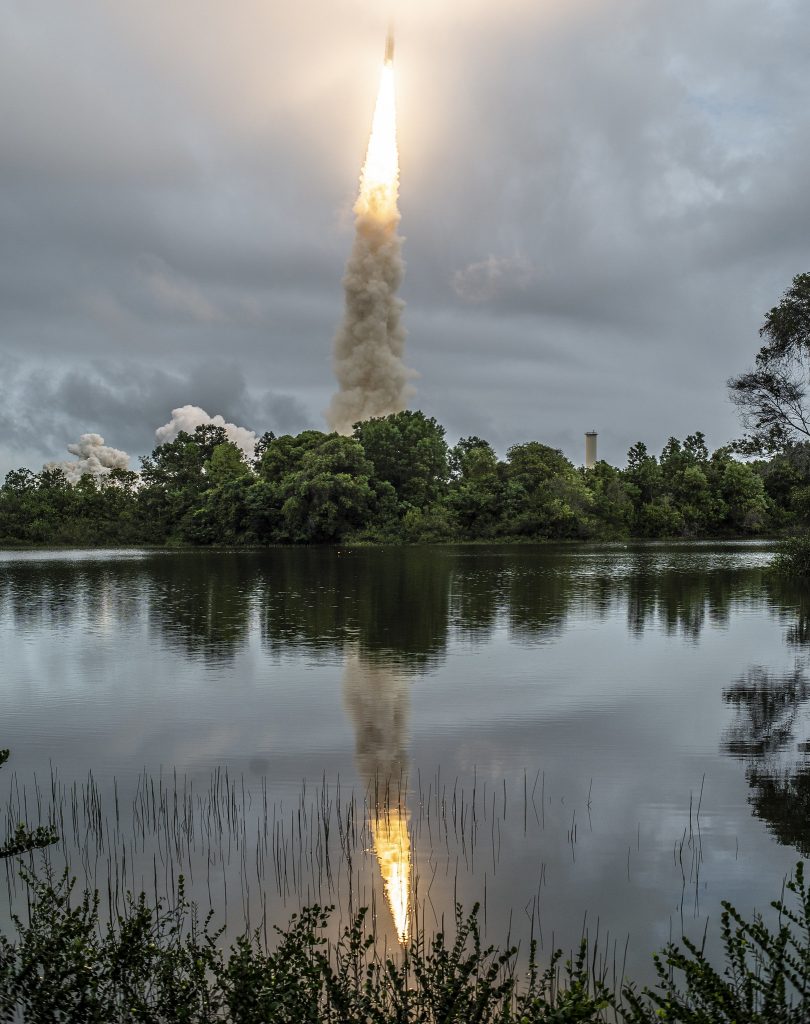
Arianespace’s Ariane 5 rocket launches with NASA’s James Webb Space Telescope onboard, Saturday, Dec. 25, 2021, from the ELA-3 Launch Zone of Europe’s Spaceport at the Guiana Space Centre in Kourou, French Guiana. Photo by Chris Gunn, courtesy of NASA, Creative Commons Attribution 2.0 Generic license.
The universe is constantly expanding, and its furthest reaches continue to move away from Earth, so their light takes longer to reach us. High-powered telescopes, therefore, function as time machines of sorts, taking snapshots of the long distant past. The Hubble has captured stars as they appeared 13.3 billion years ago, just 400 million years after the Big Bang.
Webb will be able to peer even farther back into the origins of the universe, to 13.6 billion years ago, and perhaps even earlier. (But there are still limits. Before the so-called “cosmic dawn,” there was only darkness, and therefore nothing our current telescope technology can observe.) Astronomers hope that catching a glimpse of the first stars that ever formed will better our understanding of the cosmos.
“We are looking for the first light that turned on at the very beginning of cosmic time,” Caitlin Casey, an astronomer at the University of Texas at Austin who will make observations with Webb, told Vox.
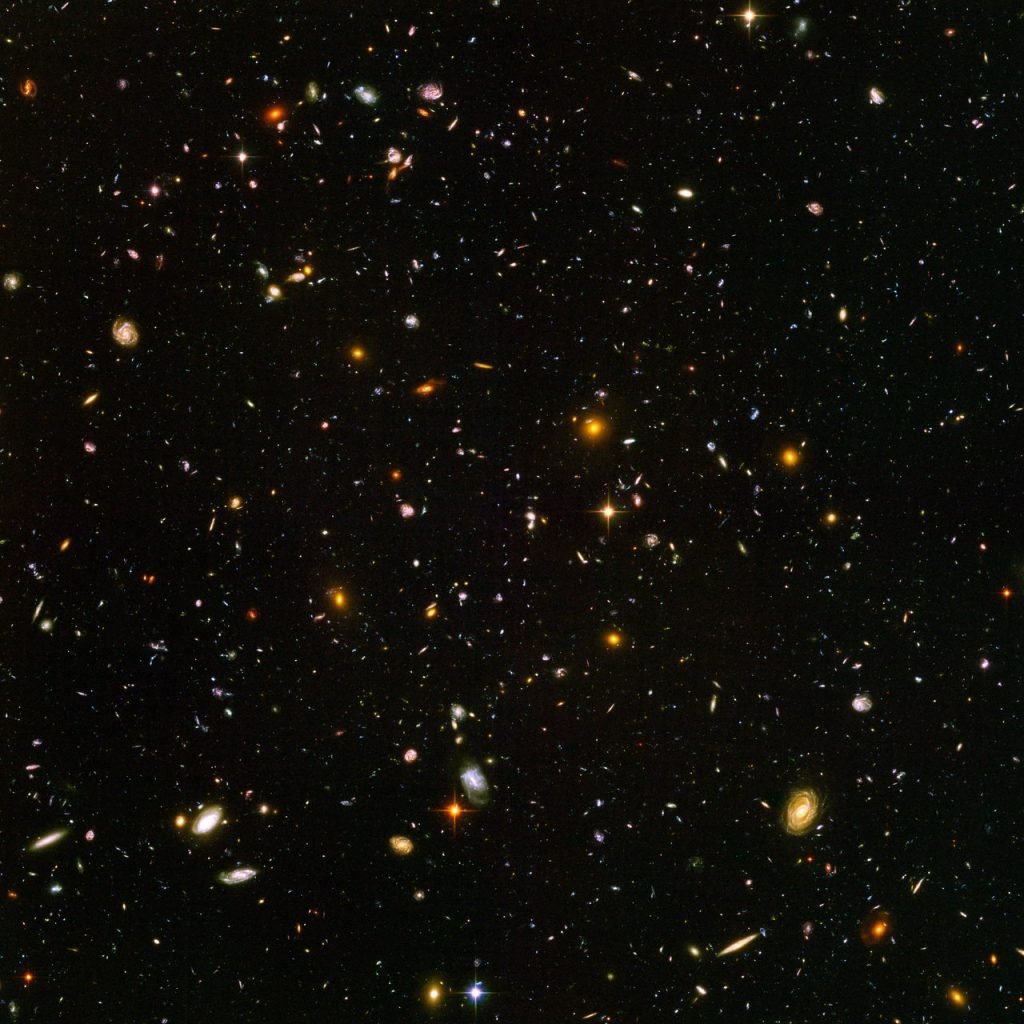
This view of nearly 10,000 galaxies is called the Hubble Ultra Deep Field. Courtesy of NASA, ESA, and S. Beckwith (Space Telescope Science Institute), and Robert Williams and the Hubble Deep Field Team, Creative Commons Attribution 4.0 International license.
What will make it possible? Webb’s primary mirror is over 21 feet wide, compared to just under eight feet on Hubble, offering a much larger light collecting area. That means it can capture seven times as much light, making fainter, more distant objects brighter. (Because of the extreme distances involved, individual observations can last up to 200 or 300 hours.) And unlike Hubble, Webb has instruments that are sensitive to infrared “heat” radiation invisible to the naked eye.
Due to a phenomenon known as “redshift,” more distant objects have longer wavelengths, passing out of the visible spectrum and into the infrared. The more distant an object is, the more highly redshifted the light will be by the time the light reaches us. (The effect is similar to an approaching and receding ambulance siren.)
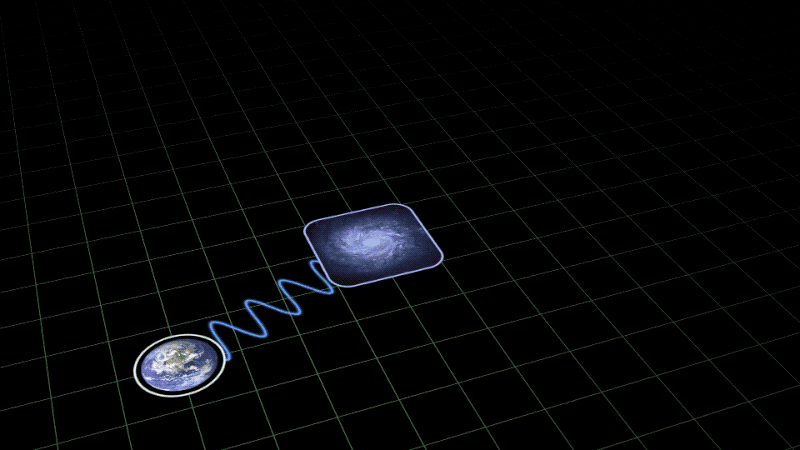
An illustration of the redshifting effect, where lightwaves elongate as they move further away, shifting from visible light to infrared. Courtesy of NASA/JPL-Caltech/R. Hurt (Caltech-IPAC).
Astronomers hope Webb will finally allow them to see in high-resolution detail what’s going on inside the dust clouds where stars and planets are being born—because unlike visible light, infrared wavelengths can penetrate that dust, revealing the galactic embers within.
Hubble is designed to primarily make observations of optical and ultraviolet light, with limited infrared capability from .8 to 2.5 microns. Webb can observe from .6 microns to 28 microns, allowing it to see much longer wavelengths.
That access to a different part of the spectrum will allow the telescope to build on what we have learned from Hubble, viewing stars that are further away and making vastly improved infrared images.
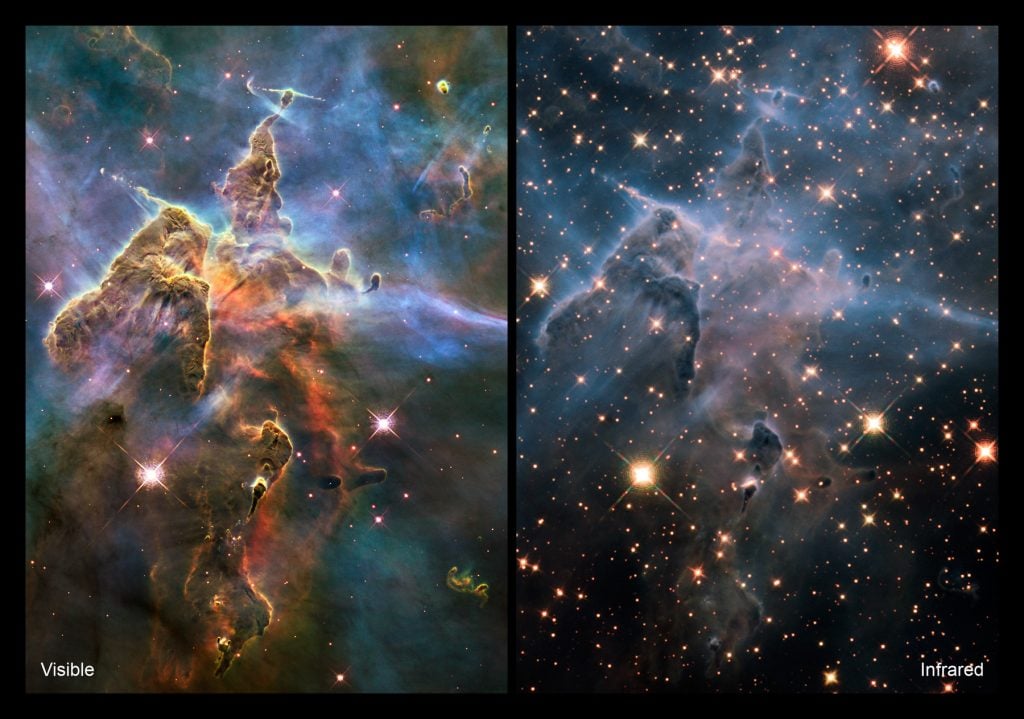
Comparison of two Hubble images of the Carina Nebula, left in visible light and right in infrared light. In the infrared image, we can see more stars that weren’t previously visible. Courtesy of NASA/ESA/M. Livio & Hubble 20th Anniversary Team (Space Telescope Science Institute).
In fact, Webb’s instruments are so sensitive, it “can see the heat signature of a bumblebee at the distance of the Moon,” astrophysicist John Mather, the mission’s senior project scientist, said on Twitter.
Another major difference between the two space telescopes is where Webb will be making its observations. The Hubble Telescope sits in low orbit, just 375 miles from Earth.
That makes it accessible by astronauts, who have conducted five servicing missions to provide maintenance and upgrades over the years—including fixing a flaw in the telescope’s mirror after launch that rendered the initial images fuzzy. (Servicing has not been possible since the decommissioning of the Space Shuttles.)
When Webb launched aboard the European Space Agency’s Ariane 5 rocket on December 25, it embarked on a risk-filled, million-mile journey—dubbed “29 days on the edge” by the space agency—to L2, a Lagrange point, which are space positions formed by the interaction of the gravitational fields of two large bodies (in this case, the sun and the Earth). The gravitational forces and centrifugal force balance each other out at five points in the Sun-Earth system, and this equilibrium allows small objects to maintain a constant orbit with relatively little adjustment, using minimal fuel.
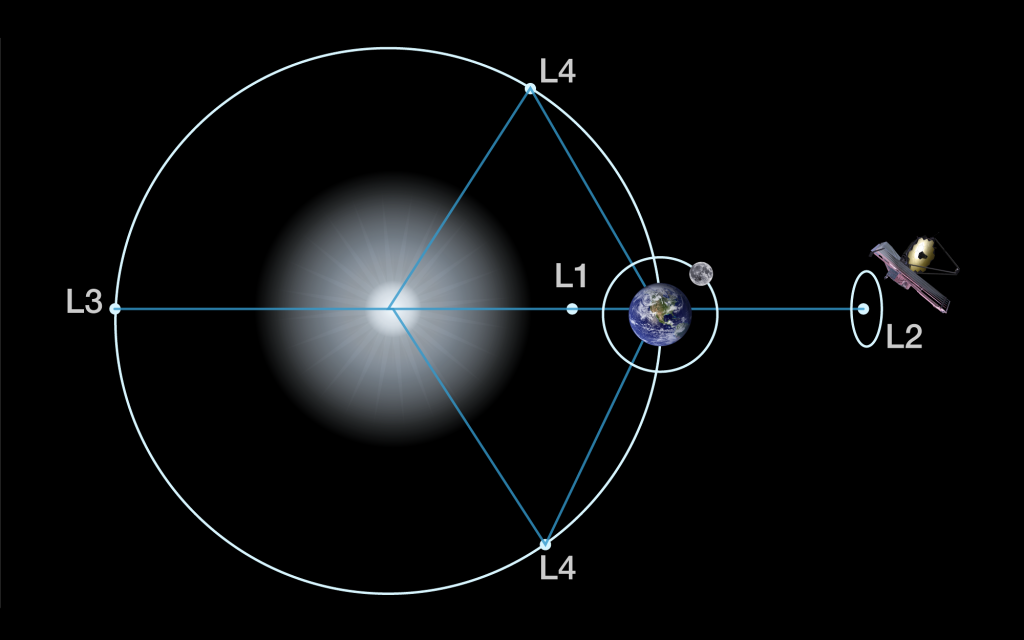
The Sun-Earth system has five Langrange points where the gravitational fields of the two bodies stand at equilibrium. The James Webb Space Telescope will orbit the sun from the second Lagrange point. Courtesy of NASA/Space Telescope Science Institute.
This has both advantages and disadvantages for the telescope. Astronauts won’t be able to repair Webb during space walks. In fact, as of launch time, there were more than 300 potential failures that could have completely derailed the mission. Just one mistake or misfire could render Webb inoperable, ruining 40 million hours of work by an international team of thousands.
But because L2 is defined by Earth’s gravitational pull, Webb will orbit the sun in the same amount of time as the Earth. That will keep it relatively close to the planet, allowing for fast transmission of data. And if all goes according to plan, Webb will be uniquely situated to capture incredible views of our universe.
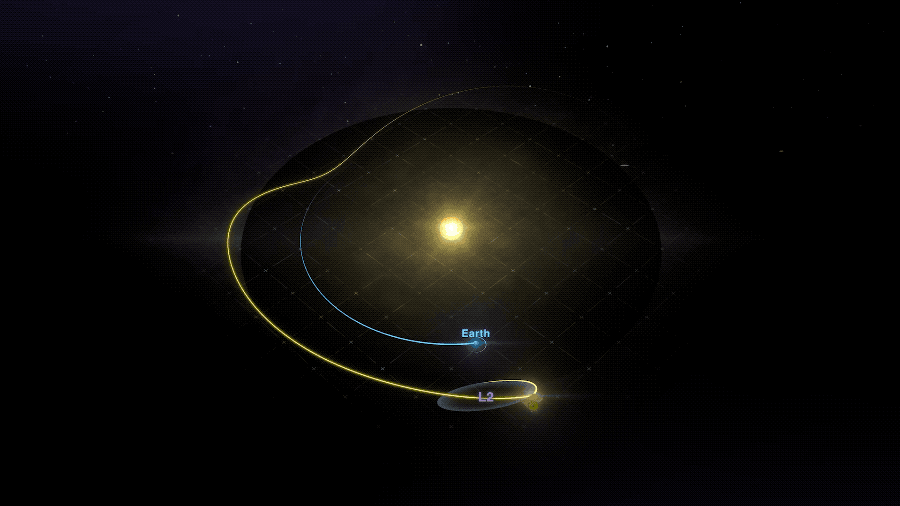
James Webb Space Telescope’s planned orbit at the second Lagrange point. Courtesy of Michael McClare/Aaron E. Lepsch/Josh Masters via NASA’s Goddard Space Flight Center.
Sitting in line with the center of both large bodies, L2 lies on the far side of the Earth. And the location will keep the sun, Earth, and moon behind the sunshield at all times, blocking all heat and light those bodies generate even as the sunshine powers the spacecraft’s solar array.
On the side facing the sun, the shield will be exposed to temperatures up to 230 degrees Fahrenheit—but it is designed to keep the temperature at a constant negative 370 degrees Fahrenheit. Any higher, and the heat will interfere with faint infrared observations. That’s why the successful opening of the sunshield was such a key moment for the telescope.
“Unfolding Webb’s sunshield in space is an incredible milestone, crucial to the success of the mission,” Gregory L. Robinson, Webb’s program director at NASA headquarters, said in a statement. “Thousands of parts had to work with precision for this marvel of engineering to fully unfurl.”
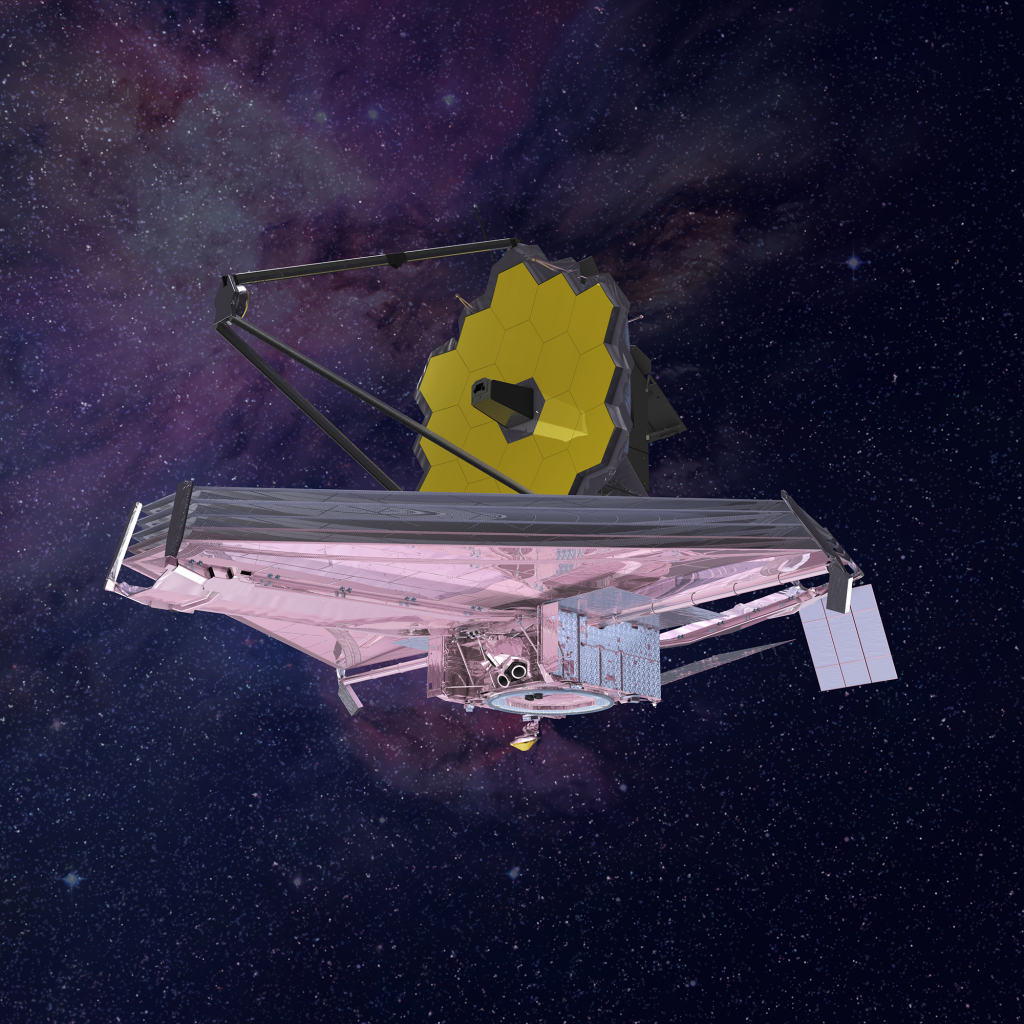
Artist rendering of the James Webb Space Telescope. Courtesy of NASA, ESA, and Northrop Grumman.
Now that the complex task has been completed, NASA estimates Webb has overcome up to 75 percent of the potential single-point failures—including 107 individual release devices on the sunshield—that could jeopardize the mission.
The next step is opening Webb’s 21-foot mirror, which had to be split into 18 hexagonal gold-coated beryllium segments and folded up, origami-style, to fit into the rocket’s 16-foot payload fairing chamber. Once the mirror panels have unfolded and locked into their honeycomb formation, the telescope, now fully deployed, will complete its journey to L2, where it is set to arrive January 23.
The first images are due to be released in June. Before Webb begins beaming data back to earth, NASA will take months to cool the telescope to cryogenic operating temperatures, make sure all the instruments are calibrated, and fine-tune the alignment of the mirror segments—which need to act as a single light-collecting surface—within nanometers.
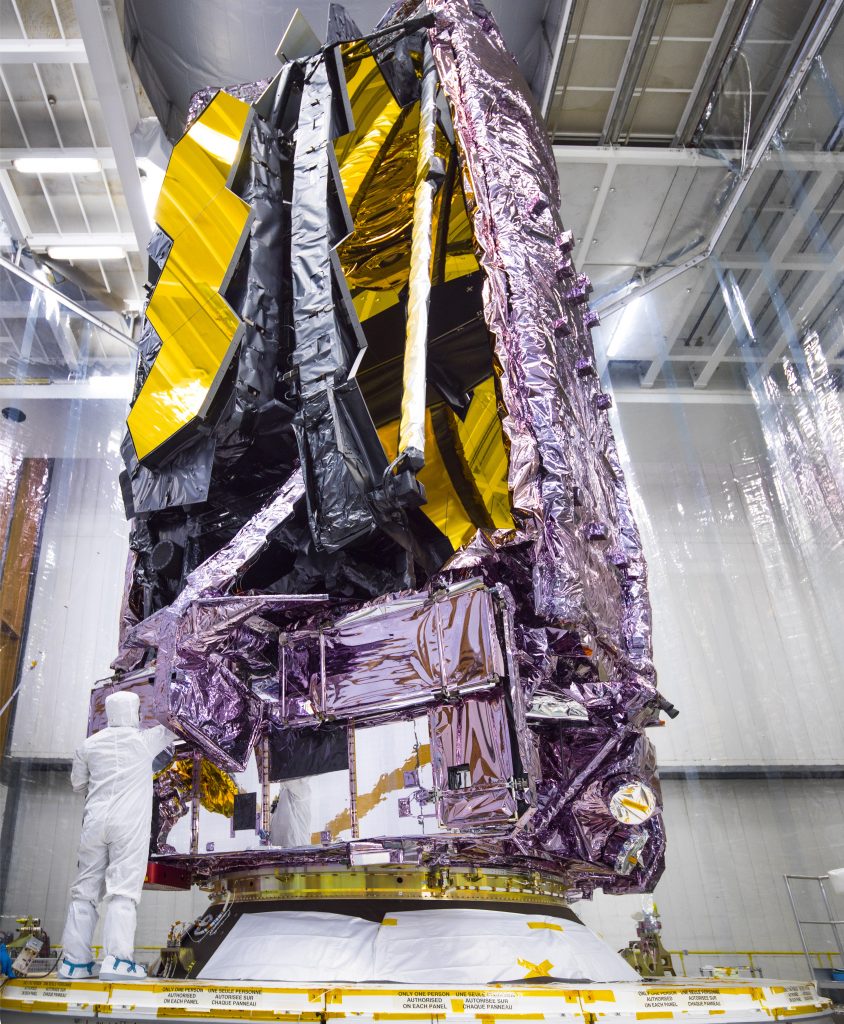
NASA’s James Webb Space Telescope folded up on the Ariane 5 rocket ahead of its launch on, Saturday, Dec. 25, 2021. Photo by Chris Gunn, courtesy of NASA, Creative Commons Attribution 2.0 Generic license.
Then and only then can we expect stunning new images of the cosmos like those we’ve come to expect from Hubble.
“Its imagery will be detailed and spectacular,” NASA has promised.
Creating those images from the data collected by telescopes is a process unto itself, and it’s worth noting that colorful representations of galaxies and nebulas usually don’t represent how these scenes would look to the naked eye.
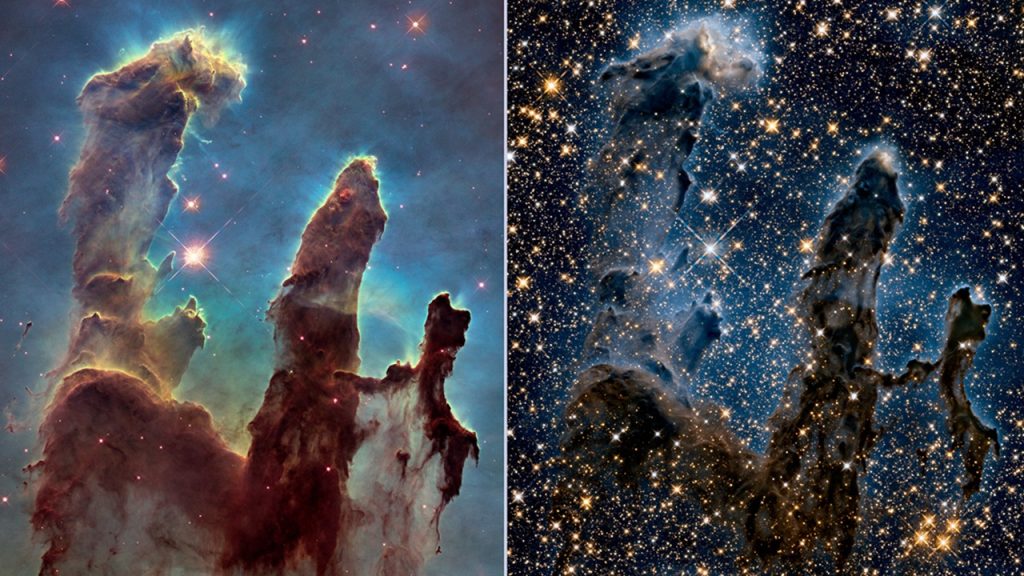
These are two Hubble images of the Pillars of Creation. The right shows what it looks like in infrared, which is closer to what the Webb telescope will see. NASA, ESA, the Hubble Heritage Team (Space Telescope Science Institute/AURA), A. Nota (ESA/Space Telescope Science Institute), and the Westerlund 2 Science Team.
The digital sensors in space telescopes are not sensitive to color, and only record incoming light photons. Software algorithms can reconstruct the data from multiple readings filtering for different light wavelengths to offer a colorized interpretation of what the data suggests.
But the images with the most vibrantly otherworldly colors—the shocking greens, oranges, and purples—have not been created with an eye toward realism. During image processing, scientists will add color to enhance details or highlight notable elements such as oxygen or hydrogen, or to illustrate observations of wavelengths beyond the visible spectrum, such as infrared and ultraviolet light, gamma rays, and X-rays.
Colorizing the black-and-white exposures is a process NASA has called “equal parts art and science”—which means these ultra-saturated, color-enhanced views of the universe aren’t just gorgeous, they are educational.
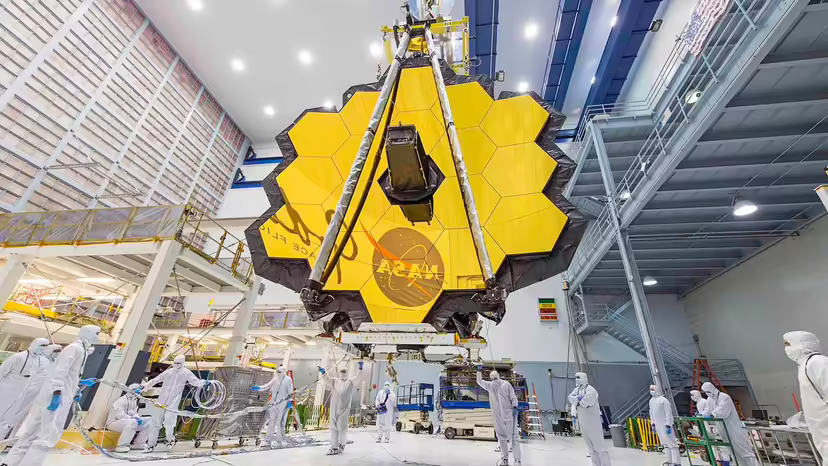
The James Webb Space Telescope’s optical telescope element, an 18-panel mirror, at NASA’s Goddard Space Flight Center in Greenbelt, Maryland, in 2017. Photo by Desiree Stover, courtesy of NASA.
If all goes according to plan, the Webb telescope will provide at least five years of data, with the hope it will remain operational for a decade or even longer. Astronomers anywhere in the world can apply for time and funding to use Webb for observations, with proposals reviewed annually.
And regardless of how long the mission lasts, no one can really predict what Webb will find.
“It’s going to be like Galileo first looking at the sky on a telescope, you know, discovering the moons around Jupiter in the rings of Saturn,” Rogier Windhorst, an astronomer and physics professor at Arizona State University, told UPI in May. “Our eyes are going to be reopened to the universe…. we’re going to see new and unexpected things that we’ve never dreamed of.”